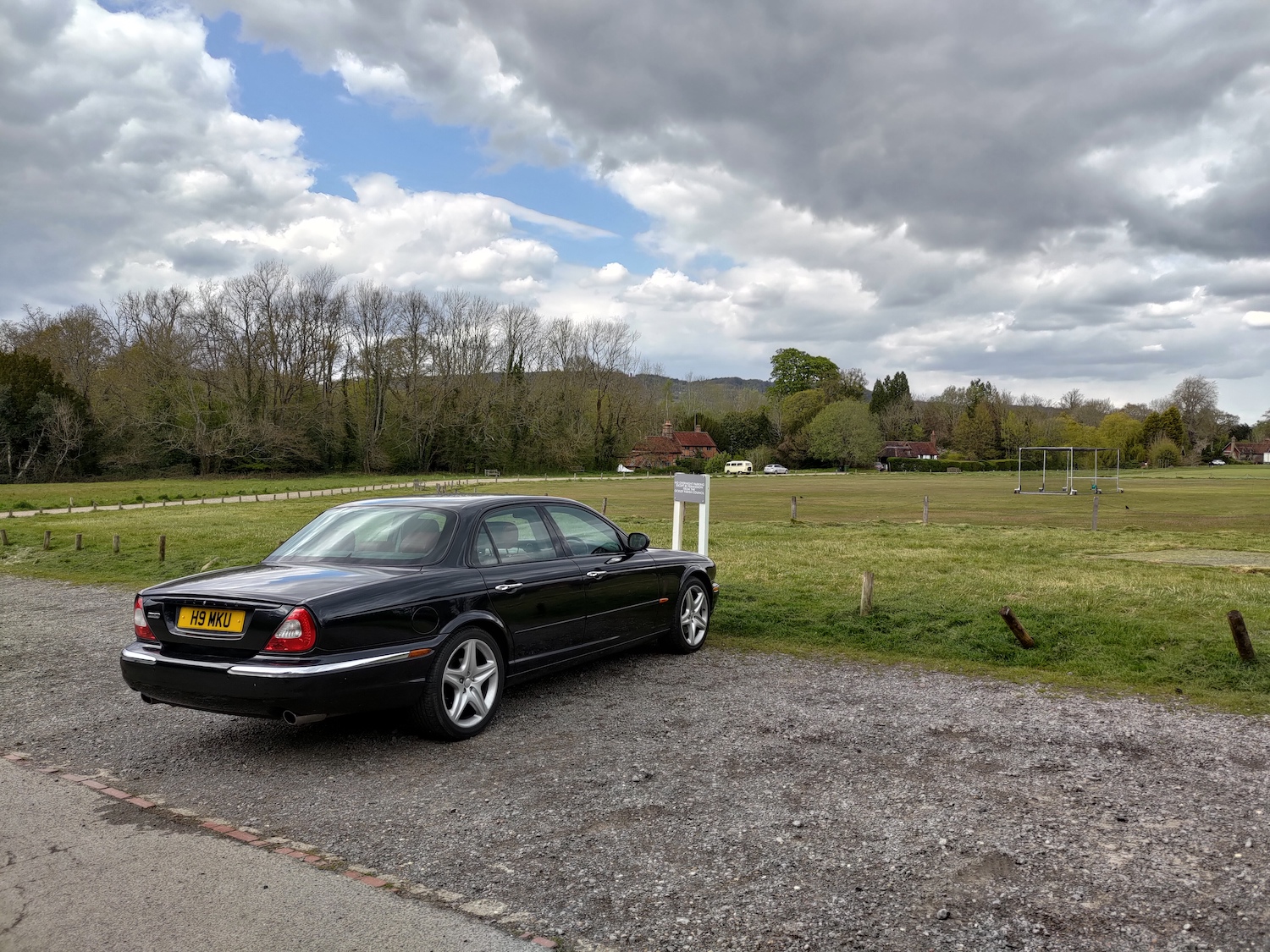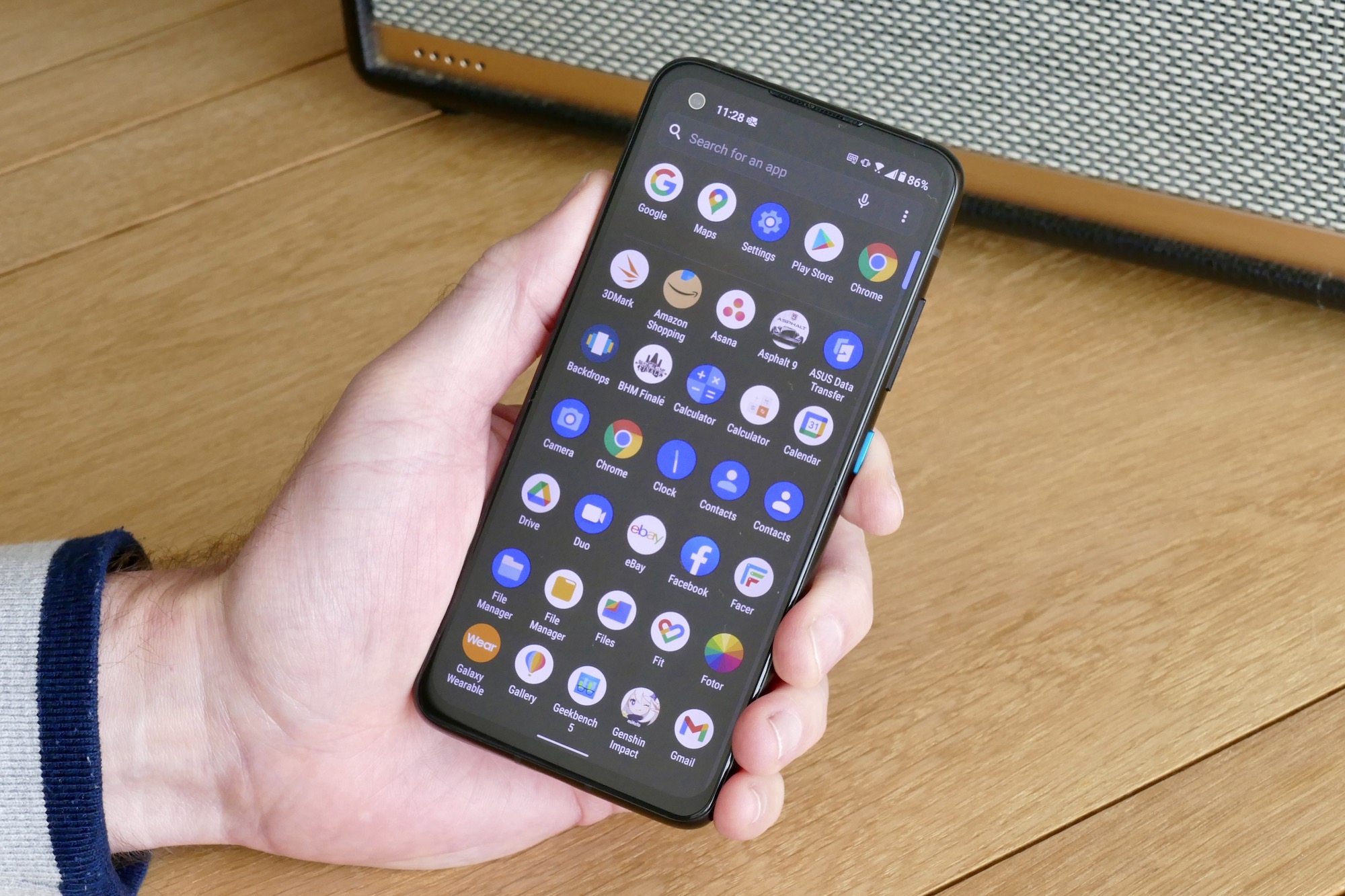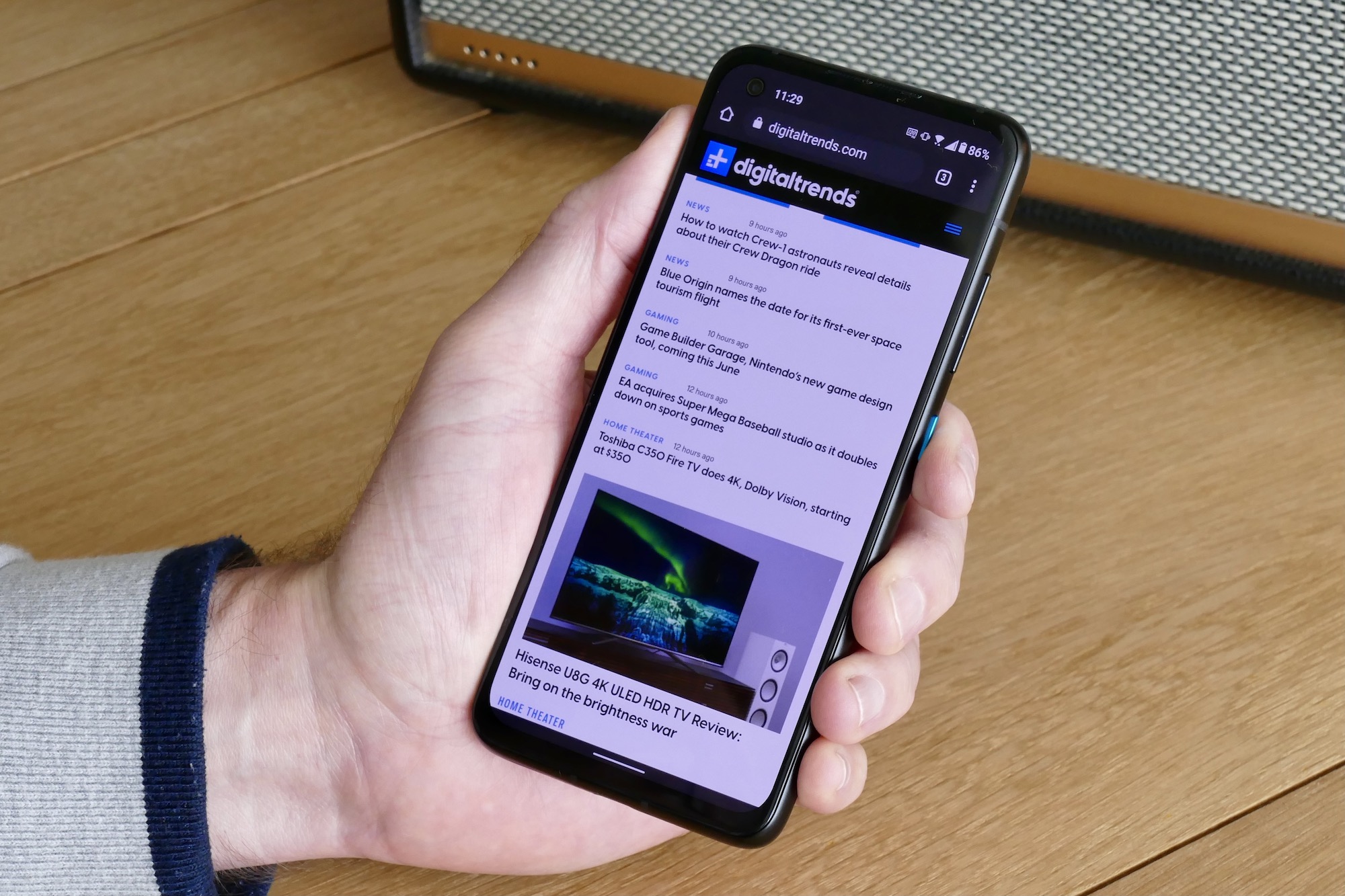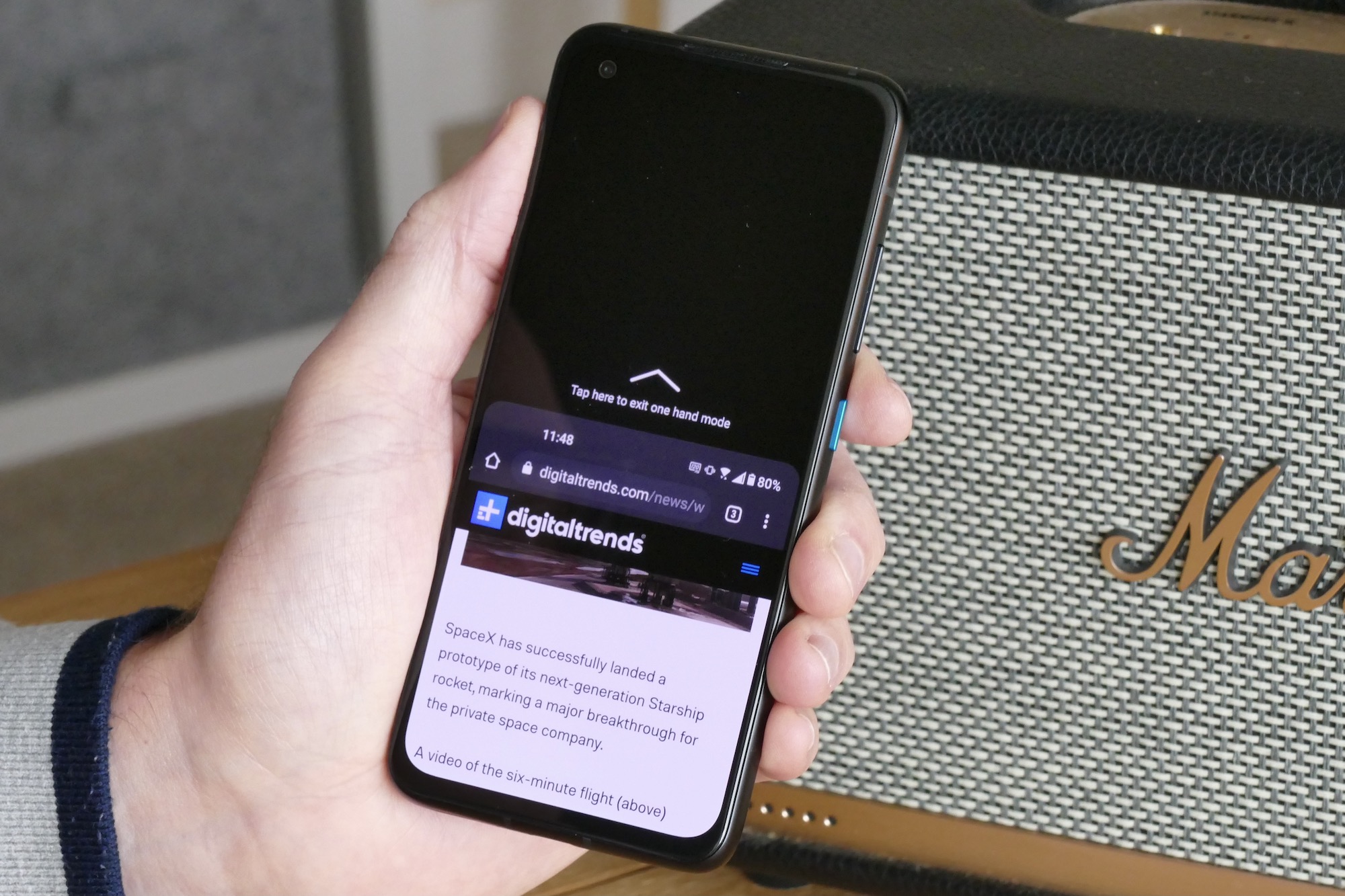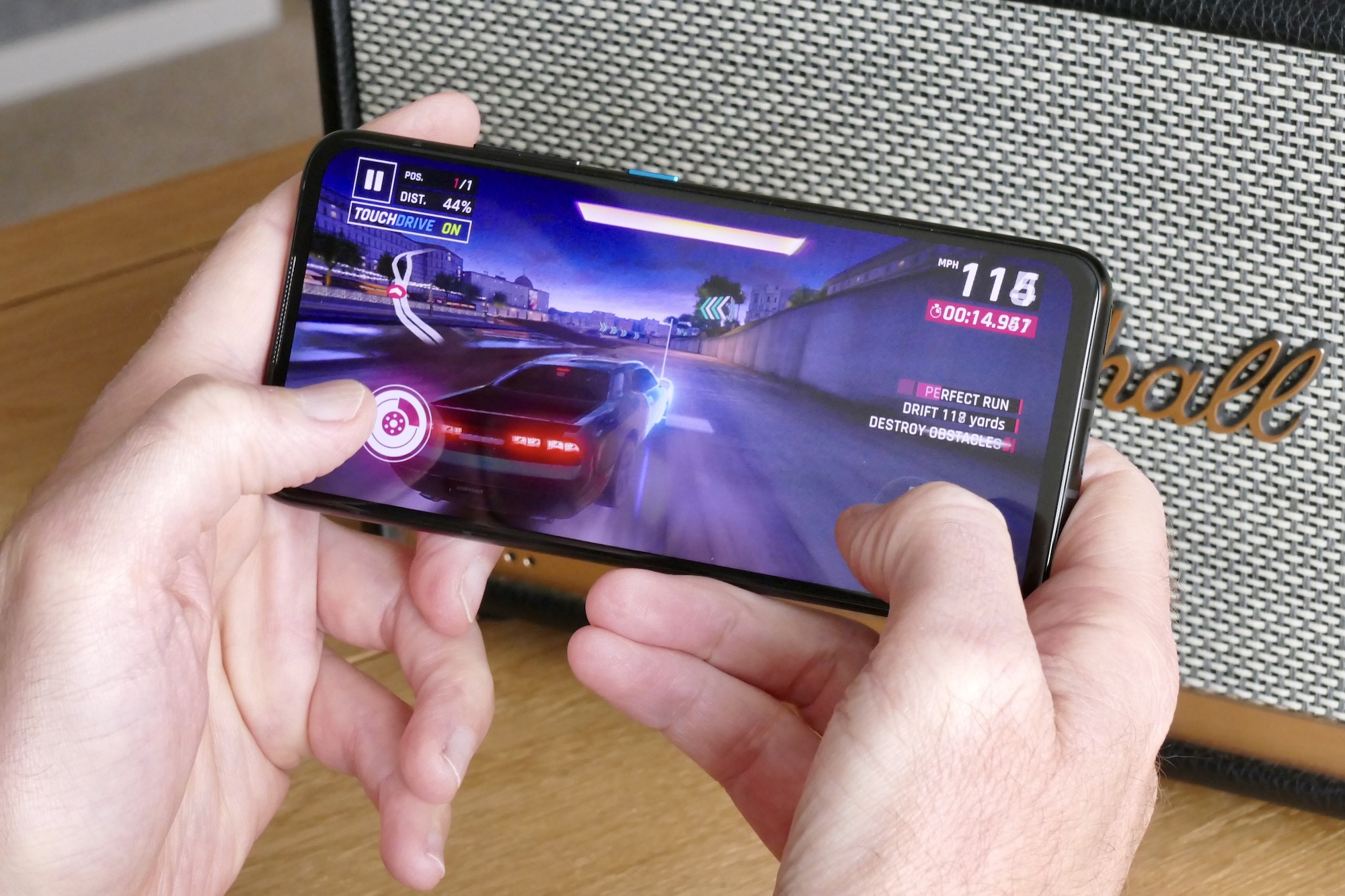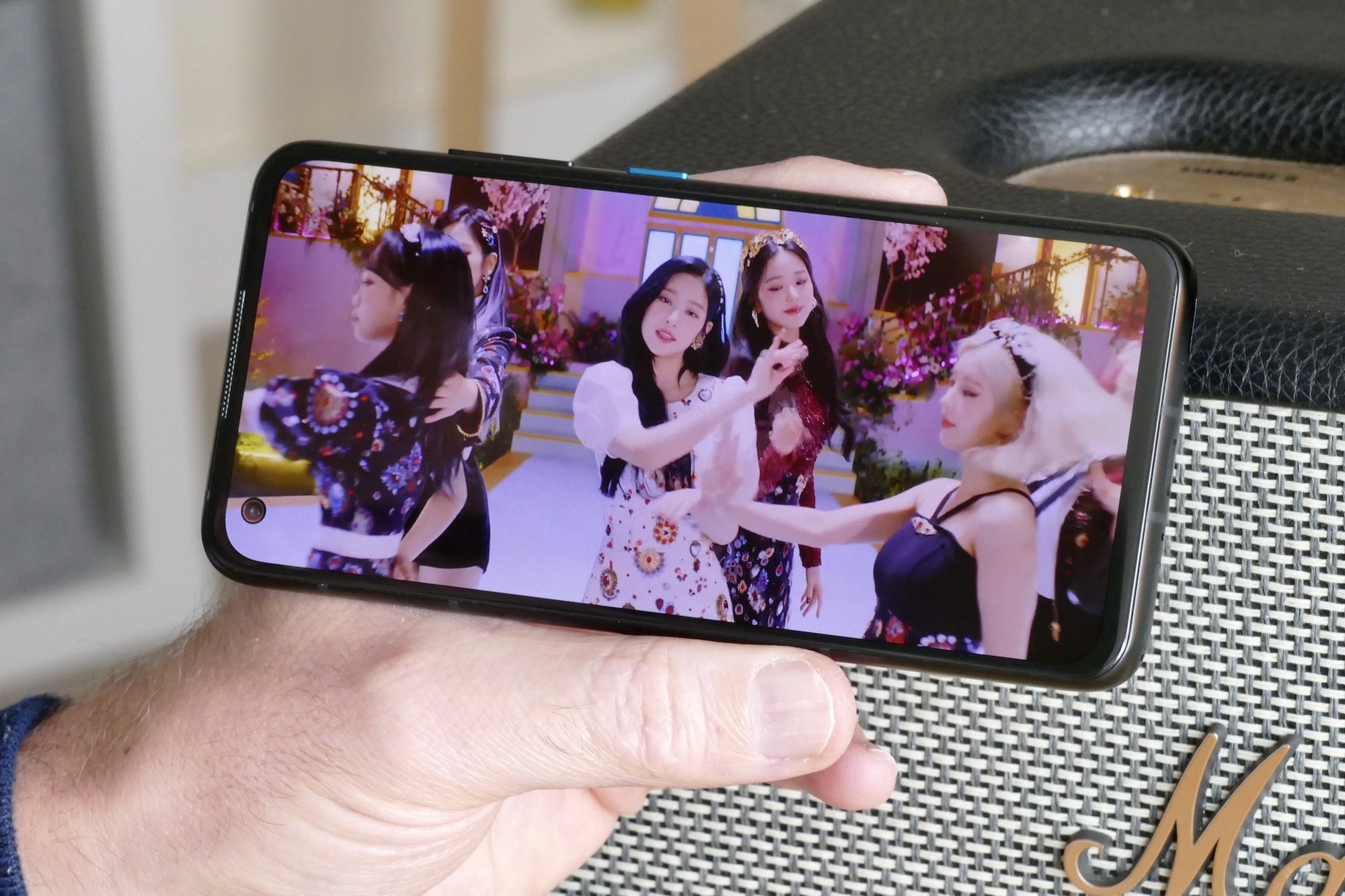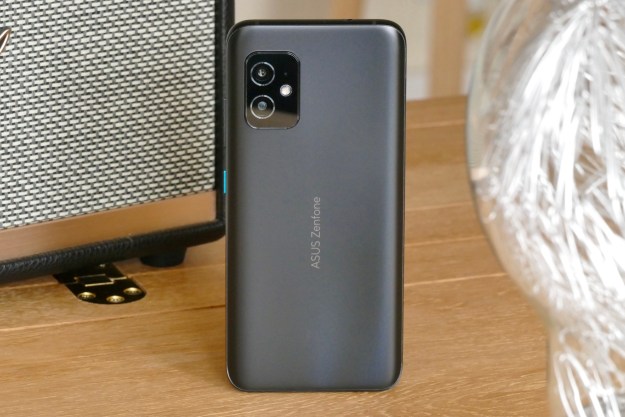
“The Asus Zenfone 8 is a well-designed, carefully thought-out compact flagship phone, but problems with screen responsiveness and battery life leave it struggling against the competition”
- Small and lightweight
- Great, but quite simple, camera
- Poor battery life
- Screen responsiveness problems
- No wireless charging
toAsus isn’t looking to take on the Galaxy S21 Ultra or any other massive smartphone with the new Zenfone 8. Instead, it’s targeting phones like the iPhone 12, the Google Pixel 4a 5G, and Pixel 5 by making a high-performance mobile phone that fits neatly in your hand and pocket. The Zenfone 8 is a compact flagship phone, and a really well-designed one, but the bigger question is, does anyone really want such a thing anymore?
The Zenfone 8 has been my main phone for a while now, and if I’m absolutely honest, despite its ability, I did miss a bigger phone. But if you’re tired of thumb-stretching screen sizes, you will probably feel very differently. However, Asus hasn’t got the fundamentals right with the Zenfone 8, and it’s in danger of being lost in the crowd. Let’s go into more detail.
Design
Asus set itself some tough targets with the Zenfone 8. It wanted a phone that was less than 70mm wide and under 150mm tall, as this would make the phone suitable for comfortable one-handed use. It has succeeded, as the Zenfone 8 measures 68mm wide and 148mm tall, and in my average-sized hand, I can reach most areas on the screen without stretching or juggling the phone.

The Samsung Galaxy S21 is a little longer and wider, but the Pixel 5 and iPhone 12 Pro are far closer in size to the Zenfone 8, and both equally manageable with one hand. The iPhone 12 Mini is considerably smaller than all of them. The Zenfone 8 may be compact, but it’s not really filling a gap in the market in the way Asus seems to think it will.

Asus has used Gorilla Glass Victus over the screen, and 3D frosted glass on the back of the phone, giving it a sleek look. While sleek, the Zenfone 8 is also slippery, which makes one-handed use awkward because it’s constantly making a bid for freedom. The 3D curve down the sides makes it pleasing to hold, but the smoothness means you end up gripping it quite hard. A plastic case is included in the box, though, and it has a grippier texture that mitigates the problem — provided you don’t mind using it.

There’s one other issue with the Zenfone 8. It’s a bit boring to look at. The back is plain, the camera module is modestly sized and very ordinary, and my review sample’s black color doesn’t add much life to it either. The only flash of color comes from the electric blue power key, but it’s not enough to elevate the look of the phone beyond the mundane. The Google Pixel 5 is no longer the dullest-looking phone on the table when the Zenfone 8 is around.
Screen
The compact size extends to the screen. The Zenfone 8 has a 5.9-inch AMOLED screen with a 120Hz refresh rate, making it smaller than the 6-inch Pixel 5 and 6.1-inch iPhone 12 Pro. It looks excellent, with 1100 nits maximum brightness and all the lovely contrast, colors, and black levels we expect from an AMOLED screen, but Asus still needs to refine it. My review phone is running the final version of the software ahead of release, and there may be other updates that come soon after launch to fix the following issues.

The first issue is with touch sensitivity and edge recognition. The Zenfone 8 may have little bezels and no dramatic curve, but it really suffers from phantom touches. I endlessly open apps by accident, swipe down the notification shade, or switch between features without meaning to, and I find myself treating the phone delicately trying to avoid those things. Very frustrating.
Despite it not being a big phone, Asus has added a one-handed mode to the Zenfone 8, which minimizes the display to the lower part of the screen — the exact amount it covers can be adjusted in the settings — to make it easier to use with one hand. It seems like overkill after making an actual small phone in the first place, but worse is how it’s activated. You need to swipe down on the screen in the lower part, and likely due to the screen’s hypersensitivity, it’s a real pain to do so. It’s usually the notification shade or app tray that appears, and when the one-handed mode does engage, the slightest breeze on the screen makes it disappear.

I’m not done yet either, because the in-display fingerprint sensor is slow and unreliable. After being annoyed by the Galaxy S20’s in-display fingerprint sensor, which was fixed on the S21 series, plus using the lightning quick fingerprint on the OnePlus 9 Pro, going back to a sensor that doesn’t work very well is an irritation that seems unnecessary these days. There’s also a face unlock feature, but this doesn’t match the speed of other phones either. Security on the Zenfone 8 is a ponderous affair.
Camera
For a flagship Android phone, it’s a surprise to see the Zenfone 8 isn’t stuffed full of camera lenses. There are just two on the back — a 64-megapixel Sony IMX686 with optical image stabilization, plus a 12MP Sony IMX363 wide-angle camera — and a single 12MP selfie camera in a hole-punch in the screen. All three have autofocus, which makes for a nice change, but no optical zoom feature. It’s all shockingly restrained on Asus’ part, when some others may have added a useless macro camera just to make for a “better” spec sheet.

The results are generally very good, although it’s clear that even when it’s set to Auto, the HDR effect is strong. Personall,y I don’t mind the look, but others will find it’s very heavy-handed and prefer to turn it off. The addition of “bracketing,” where three photos are taken with different exposure values, may also be responsible for this look.
There’s a tendency for the camera to sometimes underexpose in difficult lighting, and you will find these photos will need some editing to improve the look. The wide-angle camera is particularly sensitive to this, and there’s not always much consistency across the cameras. Colors are strong and vibrant in photos taken with the primary camera, and scenes have plenty of depth and emotion to them, encouraging some creativity.
It’s a shame there’s no optical zoom, but Asus does add a “lossless” 2x crop on the main camera. This feature is a little hidden away on the busy viewfinder screen, as it’s not alongside the main/wide-angle toggle, but controlled by a separate button in the corner. Otherwise, the app is very similar to other systems in terms of use, but is sometimes a little slow with the shutter release.
Instead of seeing what Samsung does with multiple lenses, Asus has looked to Google for inspiration and given the Zenfone 8 a pair of capable cameras that take good photos. However, avid photographers will miss the versatility of an optical zoom.
Performance and software
Asus has used the Qualcomm Snapdragon 888 processor for the Zenfone 8, which is most definitely a flagship processor, and it comes with up to 16GB of RAM and 256GB of storage space. I haven’t noticed any difference in performance compared to the Galaxy S21+, the OnePlus 9 Pro, or the Xiaomi Mi 11, all of which are powered by the same chip. It’s fast and powerful enough to play Genshin Impact smoothly, and perform all your everyday tasks without issue.
The software is Android 11 with Asus’ ZenUI, which looks and operates in a very similar manner to Android on the Google Pixel. Unlike Asus’ glitzy, sci-fi-style, optional Android UI on the ROG Phone 5, it’s clean and uncluttered here, yet still has plenty of features. Some of the more useful inones clude the same Game Genie mode as the ROG Phone 5, which tweaks phone performance and operation when playing games, plus special modes to schedule battery charging.
Leaving aside the screen frustrations, the Zenfone 8 truly does offer a “flagship” phone experience in a compact package when it comes to performance and software. The Snapdragon 888 has vast reserves of power and will ensure the phone lasts for years, even if you play a lot of the latest games.
Battery and sound
A 4,000mAh battery and support for an included 30-watt Asus HyperCharge fast charger, plus Qualcomm Quick Charge 4.0, should put the Zenfone 8 well ahead of the competition when it comes to battery life — but it doesn’t. In my use, the Zenfone 8 has disappointed with a shorter than expected usage time, especially when used moderately hard.

Although most of my day is spent connected to Wi-Fi and using the phone for general calls, email, social media, and some photos, it has usually ended the day with around 40% remaining. Typically, with phones like the Galaxy S21 Ultra, this kind of use sees at least 60% left. Things get much worse when you use the phone a little more.
A day with an hour of gaming, 30 minutes of video, several calls, and an hourlong WhatsApp video call saw the battery hit 5% at 9 p.m, which isn’t good at all when phones like the Samsung Galaxy A52 5G get two days from a similarly sized battery. Head outside into the real world, where the phone was forced to connect to a normal cellular network, and the battery loses charge quicker than expected even with minimal use.
The Zenfone 8 is not a phone to work hard if you want the battery to last. Again, although I’m using what Asus says is the final version of the software, updates may arrive that change the battery’s performance in the future. Recharging took 90 minutes using Quick Charge 4, and using the 30W HyperCharge block will add 60% in 25 minutes. There’s no wireless charging, a technology Asus prefers not to use so it can better manage cell longevity, but it’s still something of a given on a flagship phone today.

Like with the ROG Phone 5, Asus has worked with audio experts at Dirac on the Zenfone 8, and its dual stereo speakers — powered by a Cirrus Logic CS35L45 amp — sound excellent. There’s also Hi Res support and Qualcomm’s Aqstic codec. There’s even a 3.5mm headphone jack, a real rarity these days. It all adds up to make the Zenfone 8 one of the best-sounding phones you can get.
Price and availability
The Zenfone 8 will launch in the U.S., but at the time of writing, the exact date and price have not been confirmed. In Europe, the Zenfone 8 starts at 539 euros/$650 for the 6GB/128GB model, then increases to 599 euros/$723 for the 8GB/128GB version, and to 699 euros/$843 for the top 16GB/128GB phone. Exactly which region will get which model is also unknown, but it’s possible the 8GB/128GB Zenfone 8 may be the cheapest available where you live.
Our take
Are you going to regret getting a “small” phone today? It really depends on what you want to do with it. The convenience of the Zenfone 8 disappearing in your pocket is great, and it genuinely is usable with one hand provided it’s inside the case. However, I missed a bigger screen, even the iPhone 12 Pro’s barely larger 6.1-inch screen, when I wanted to watch video for any length of time.
Many have lamented the relative scarcity of compact, high-performance phones for a while, but there’s actually a healthy range of them out there, and it’s up for debate whether many people are really buying them. If you’re a staunch supporter of the compact phone, the Zenfone 8 should be right at the top of your shopping list, as the shape and size of the phone have been well-engineered. Plus it has the same power and ability as massive phones like the Galaxy S21 Ultra.
However, the Zenfone 8 really struggles with battery life, the security options are slow, and the camera won’t appeal to those who are seriously into mobile photography. I like the Zenfone 8 and Asus’ commitment to not following the crowd, but the Zenfone 8’s downsides make it a hard sell over the competition.
Is there a better alternative?
The Zenfone 8 faces serious competition from Google and Samsung, and a challenge from Apple, too, if you’re willing to spend a little more. The Google Pixel 4a 5G is slightly larger than the Zenfone 8, but at $499 and with a strong camera, it’s a great buy. The Google Pixel 5 is just as compact as the Zenfone, plus it still has that fantastic camera and guaranteed software updates, but it costs $699. The Samsung Galaxy A52 5G has far better battery life, a great screen, and a decent camera for $499.
The Apple iPhone 12 Mini is $699 and is a true compact phone, while the slightly larger iPhone 12 is $799. The iPhone 12 Pro is the model we really recommend, but at $999, it’s significantly more expensive than the Zenfone 8.
How long will it last?
Asus will provide two major Android software updates for the Zenfone 8, but timing may not be as immediate as on phones like the Google Pixel. The body has both IP56 and IP68 water and dust resistance, and the Gorilla Glass Victus should provide decent scratch and shatter protection for the screen, plus there’s a basic case included in the box, so the Zenfone 8 should be quite durable. With 5G and the latest Qualcomm Snapdragon 888 processor inside, it will easily last for two to three years before a replacement needs to be considered.
Should you buy it?
No. Unless a software update improves the battery life, screen responsiveness, and fingerprint sensor performance, it can’t quite match the competition.
Editors' Recommendations
- This Google Pixel 8a leak just spoiled everything about the phone
- Ignore the rumors — this iconic phone brand isn’t going away
- An iPhone that isn’t the iPhone 15 is selling fast in Japan
- Asus’ latest Android phone could be a big threat to the Galaxy S23 Ultra
- The Xperia 5 IV shows Sony isn’t done making small phones







